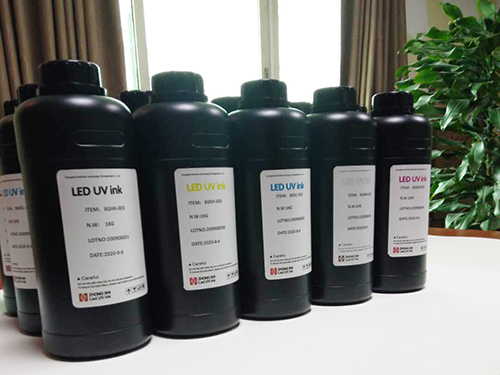The irritating odor of UV ink first comes from its own raw materials (such as monomer diluents, low molecular weight initiators, resin linkers, etc.), which slowly emit under certain conditions; Secondly, after UV ink curing, raw materials such as initiators and resins decompose to produce irritating gases such as aldehydes and sulfur. At present, the majority of the irritating odor in UV printing mainly comes from the volatiles released by the UV ink itself before and after curing.
When some monomers or resins do not react completely, there may be unreacted "acrylic acid" components, forming a pungent sour odor. In addition, if the monomer has a low molecular weight and low boiling point, it may emit a foul odor at room temperature, especially for monofunctional monomers such as IBOA (isobornyl acrylate). The solid components used in UV ink, such as pigments, fillers, waxes, etc., are basically odorless and can be ignored.

If the quality of monomers and resins used in UV ink is good and there is no odor issue, then UV initiators are the biggest source of irritating odor. And a UV ink often requires the addition of multiple initiators to complete thorough drying and curing.
Method to eliminate the irritating odor of UV ink:
There are over a hundred types of initiators used in the market, but their efficiency, price, color depth, and range of use vary greatly. At present, most domestic printing enterprises use 907 initiator in UV ink, with the chemical name 2-methyl-1- (4-methylthiophenyl) -2-morpholin-1-acetone. This type of initiator has a moderate price and high triggering efficiency, but after solidification, it will crack out an unpleasant "methylthio group".
EDAB initiator and BP benzophenone initiator can also produce a foul odor after curing. To reduce the odor issue of initiators, these initiators can be omitted. Using high-end initiators such as 369, EHA, TPO, etc. will increase the ink cost accordingly. It can be said that choosing a good low odor UV ink is one of the key to solving the problem of irritating odors.
In addition, indoor ventilation fans are installed, and if conditions permit, separate compartments can be established. The printed product can be left for 4 hours, waiting for it to fully solidify and the odor to evaporate.